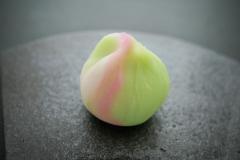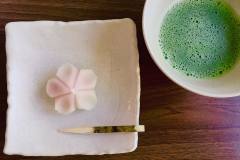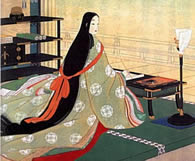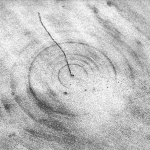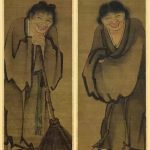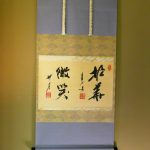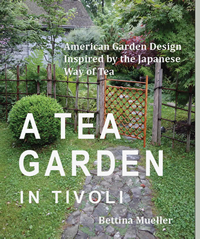Red Hot Stove
On the red hearth, one flake of snow

I love the image of a flake of snow that’s landed on the red hot stove. Gone in an instant. This phrase is from a koan in the Blue Cliff Collection, Case 69 Nansen Draws a Circle.
Three Zen friends were on their way to pay respects to the National Teacher. At one point they stopped, and Nansen drew a circle on the ground and said, “If you can speak, we’ll go on.” The story tells the various responses from his friends.
What I love about this story is the introduction to the koan by Engo. He says, “Patchrobed monks who have passed through the forest of prickly briars are like snow on a red hot oven.”
The briars and thickets are my likes and dislikes, my questioning of right and wrong, good and bad.
In Japanese the phrase is”Koro itten no yuki.” Here it is on a scroll.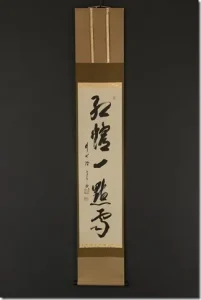
Yamada Koun commentary:
“The forest of prickly briars” refers to our own concepts and thoughts which catch us up constantly, depriving us of our freedom. Man may be “the measure of all things” because our ability to think gives us supposed dominion over the rest of nature. But, from another standpoint, this very ability to think is the source of all our suffering.
The patchrobed monks (it need not be just monks!) who have passed through this forest of prickly briars (through the practice of Mu or Shikantaza, for example) are “like snow on a red hot stove.” If a pinch of snow were placed on a red hot stove, it would immediately melt and evaporate. In the same way, when you stand up, there is just that standing, with nothing else remaining.
All other concepts have disappeared like snow on a red hot stove.
And when you sit down, there is just that sitting, without a trace of standing left over.
Every moment of our lives is like this. Just that moment.
Each second disappears like snow on a red hot oven. Standing, sitting, eating, sleeping, laughing, crying.
The content is always completely empty.
Sweets for tea
I’m obsessed with Japanese sweets. Particularly obsessed with making pure white sweets, which I have not yet mastered.
The main ingredient in all the sweets is a bean paste called An. It can be made with red azuki beans or with white lima beans, or any large white bean. When you add sugar to the bean paste, it turns an off-white. Perfect for coloring.
You can make all sorts of shapes with marvelous colors. I write about this more in detail in my cookbook The World in a Bowl of Tea which you can order online here.
But this is the sweet with it’s pure white that I cannot yet master. It involves making a glutinous mochi mixed with the An. So beautiful and illusive!
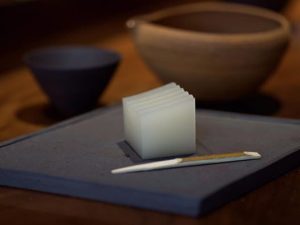
The aesthetics of beauty in the natural and immediate – Wabi and Sabi
Sixteenth century Japanese Tea masters were connoisseurs of Chinese objects. In their tea gatherings they used highly prized ceramics made with the most sophisticated techniques in all of history; the 11th century Sung Dynasty ceramics were perfect in form and color. The oxblood and apple green glazed bowls and vases were flawless.
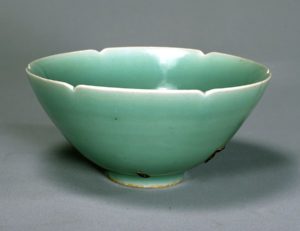
Longquan kiln between 1127-1279 (the South song era)
Sen no Rikyu, a Tea master influenced by Zen Buddhism, was the first to define a new aesthetic called Wabi. It was characterized by the crude, rough pottery wares of Japan at the time. 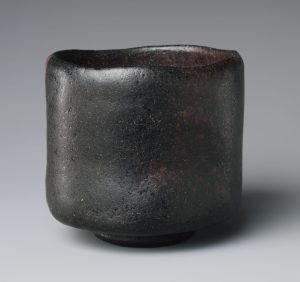
Wabi is the beauty of the simple, of restraint, of imperfection. It’s the beauty found hidden beneath the surface of things.
A spare room with a single vase of flowers can be wabi. The winding path through a garden of moss and shade can be wabi. Tea served in a black hand carved ceramic bowl can be wabi.
Poignant seasonal moments can also be felt as wabi. The first geese flying south in the autumn. The new buds in spring peeping out from the snow.

Another Japanese aesthetic often combined with Wabi is the term Sabi. Many people say that something is very “wabi-sabi,” but the two words mean different things.
Sabi can be defined as antique elegance. It’s found in the patina from a silver spoon worn around the edges or a 13th century cosmetic case burnished with care and now used to hold incense. The visible effects of time is deeply appreciated and there’s an emotional reaction to a piece that has been handled, loved, and used.
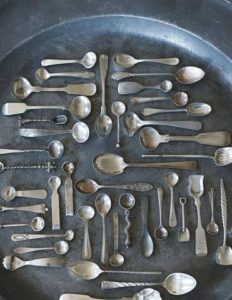

Wabi and Sabi are words that are used too often. They are not catch phrases. Instead, they could almost be described as a hidden philosophy about unity and harmony.



